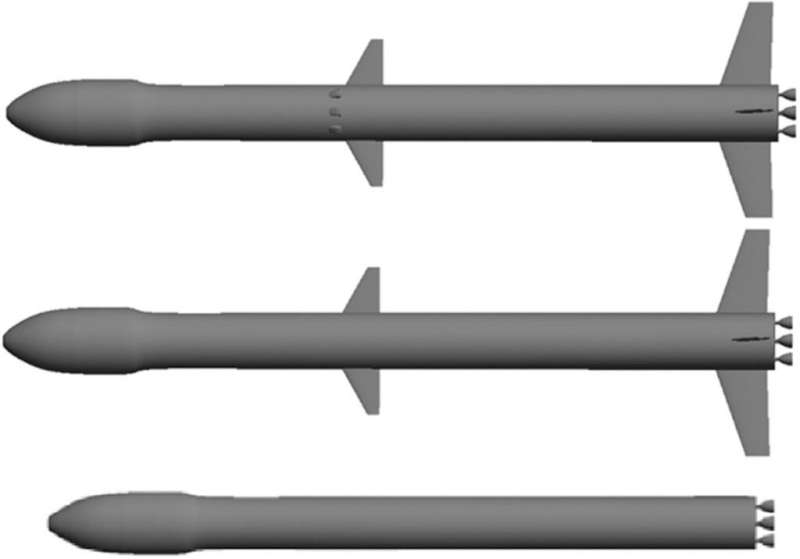This article has been reviewed according to Science X's editorial process and policies. Editors have highlighted the following attributes while ensuring the content's credibility:
fact-checked
peer-reviewed publication
trusted source
proofread
Reusable rockets could fly back to their launch sites with wings

Reusable launch vehicles have been a boon for the commercial space industry. By recovering and refurbishing the first stages of rockets, launch providers have dramatically reduced the cost of sending payloads and even crew to space. Beyond first-stage boosters, there are efforts to make rockets entirely reusable, from second stages to payload fairings. There are currently multiple strategies for booster recovery, including mid-air retrieval using helicopters and nets. Still, the favored method involves boosters returning to a landing pad under their own power (the boost-back and landing maneuver).
This strategy requires additional rocket propellant for the booster to land again, which comes at the expense of payload mass and performance for the ascent mission. As an alternative, researchers from the National Office Of Aerospace Studies And Research (ONERA) propose two new types of strategies that would allow boosters to return to their launch site. These are known as "glide-back" and "fly-back" architectures, both of which involve boosters with lifting surfaces (fins and wings) performing vertical takeoff and horizontal landing (VTVL) maneuvers.
The research was led by Mathieu Balesdent, a senior research scientist with the ONERA Information Processing and Systems Department's (DTIS) Multidisciplinary Methods and Integrated Concepts unit. He was joined by researchers from ONERA's Department of Materials and Structures (DMAS), the Aerodynamics, Aeroelasticity, Acoustics Departement (DAAA), and DTIS, with assistance provided by the National Center for Space Studies (CNES) Launchers Directorate. The paper that describes their proposal appeared in the journal Acta Astronautica.
In their paper, Balesdent and his colleagues describe how additional propellant can be saved and used for the Return To Launch Site (RTLS) mission through Multidisciplinary Design Optimization techniques that incorporate space and aeronautical technologies into boosters. These include lifting surfaces (fins, wings, etc.), air-breathing propulsion (turbojet engines), and other flight-proven methods. First, they identified two architectures that rely on some or all of these techniques, known as "glide-back" and "fly-back."
The first configuration combines space and aeronautical technologies to recover the first stage. These include an aerodynamical nose, lifting surfaces, gears, and corresponding power avionics, added to the initial stage configuration. After performing a vertical takeoff and ascent, the second stage is jettisoned while the first stage reignites some of its engines to make a powered landing (similar to SpaceX's Falcon 9 and Heavy rockets). The vehicle then performs an aerodynamic reentry and glides back to the landing site, where it lands horizontally.
The second architecture completely avoids using rocket propellant and combines the previous aeronautical elements with several turbojets and their propulsive systems for the RTLS mission. After separating from the second stage, the first stage carries out a ballistic and high-angle-of-attack atmospheric reentry. The nose-mounted turbojets are then ignited to carry out a cruise flight and land the vehicle horizontally. Balesdent and his colleagues also describe a "reusability kit" containing the requisite components for adapting first-stage boosters for both flight configurations.
They state, "These kits, composed of the lifting surfaces, the nose (including the airbreathing propulsive system for fly-back configuration), and additional subsystems (e.g., landing gears), can be mounted on the main core of the launch vehicle for performing several reusable missions, and then removed and installed on another first stage if the current one is used for a last expendable mission."
These kits can be used multiple times and allow first-stage boosters to be adapted for "glide-back" and "fly-back" maneuvers, offering commercial launch providers the ability to make their rockets retrievable or save additional propellant. The benefits include expanding the range of retrieval operations, the ability to launch heavier payloads, and (above all) more cost-effective launch services. This is in keeping with the main objective of the commercial space industry (aka. NewSpace), which is to reduce launch costs, enabling greater access to space and the "commercialization of Low Earth Orbit (LEO)."
This study was a collaboration between the French Space Agency, la Center National d'Etudes Spatiales (CNES), and the French Aerospace Lab—la Office National d'Etudes et de Recherches Aérospatiales (ONERA)—on Reusable Launch Vehicles (RLV).
More information: Mathieu Balesdent et al, Multidisciplinary design and optimization of winged architectures for reusable launch vehicles, Acta Astronautica (2023). DOI: 10.1016/j.actaastro.2023.05.041
Journal information: Acta Astronautica
Provided by Universe Today




















